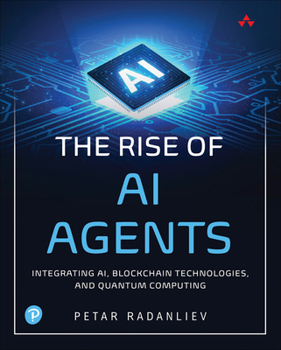The Rise of AI Agents: Integrating Ai, Blockchain Technologies, and Quantum Computing
Select Format
Select Condition 
Book Overview
UNLOCK THE FUTURE OF TECHNOLOGY WITH AI, BLOCKCHAIN, AND QUANTUM COMPUTING
Embark on a comprehensive journey that seamlessly intertwines the realms of Artificial Intelligence (AI), Blockchain, and Quantum Computing. This book goes beyond academic theory, offering readers a deep dive into the vast possibilities, inherent challenges, and profound implications of these groundbreaking technologies.
Blending rigorous research with practical insights from years of industry and academic experience in AI, Cybersecurity, and Quantum Computing, The Rise of AI Agents caters to professionals and technology enthusiasts alike. It demystifies complex concepts, providing a holistic perspective on these interconnected technologies and their potential to revolutionize industries.
Covering everything from the foundational aspects of AI, Blockchain, and Quantum Computing to their integration and future applications, this book delivers a forward-looking view rarely seen in existing literature. Real-world case studies; critical analyses of ethical, legal, and societal implications; and hands-on exercises enrich the reader's understanding, making complex theories accessible and actionable.
Whether you're a professional seeking deeper insights, a student exploring technological advancements, or an academic investigating the latest developments, this book covers the knowledge and tools you need to stay ahead in the rapidly evolving landscape of AI and beyond.




















